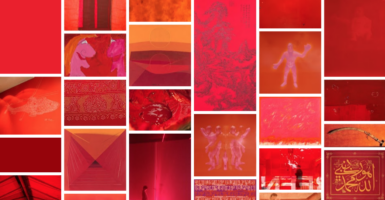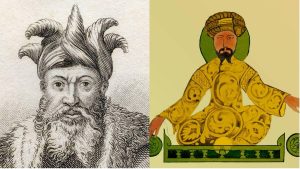The ‘Firsts’ Of Photography: Here Are Some Of The World’s Oldest Surviving Photos
In the mid-1820s, Joseph Nicéphore Niépce produced the oldest surviving photograph of a real-life scene. Since then, photography spread across several countries, where other inventors improved upon the craft. Although pictures are commonplace today, photos of people, the moon, and planes were treasures back in the 1800s. Here are many “firsts” of photography, from the oldest aerial to the first self-portrait.
The First Photo Ever Taken
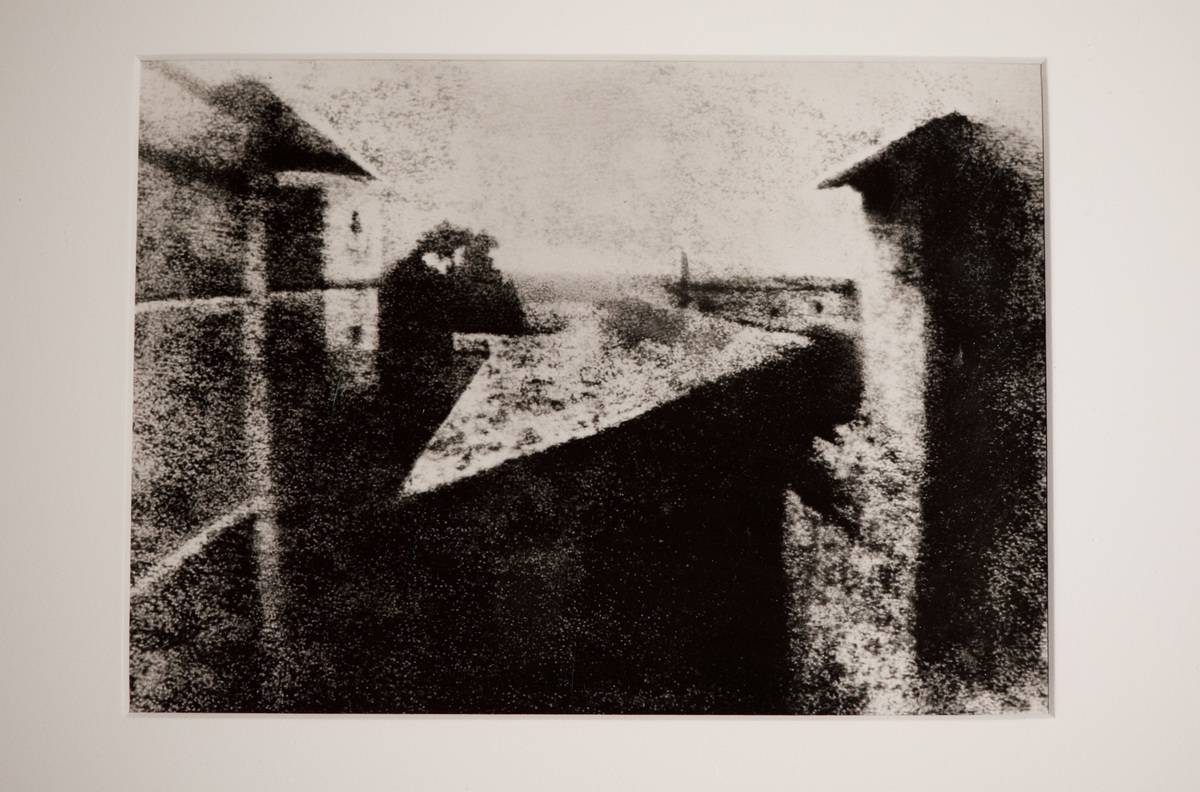
The world’s oldest photograph is thought to have been taken in either 1826 or 1827. Joseph Nicéphore Niépce used a primitive camera to take a picture of his estate. The cloudy photo shows the Le Gras in Saint-Loup-de-Varennes estate in Bourgogne, France, from Niépce’s window.
Niépce used a method called heliography, which engraved the photograph onto a plate. Because of this, no duplicates exist. The one and only picture hangs in the University of Texas at Austin. If any older photos still exist, then historians have not discovered them yet.
The Oldest Photo Featuring A Person
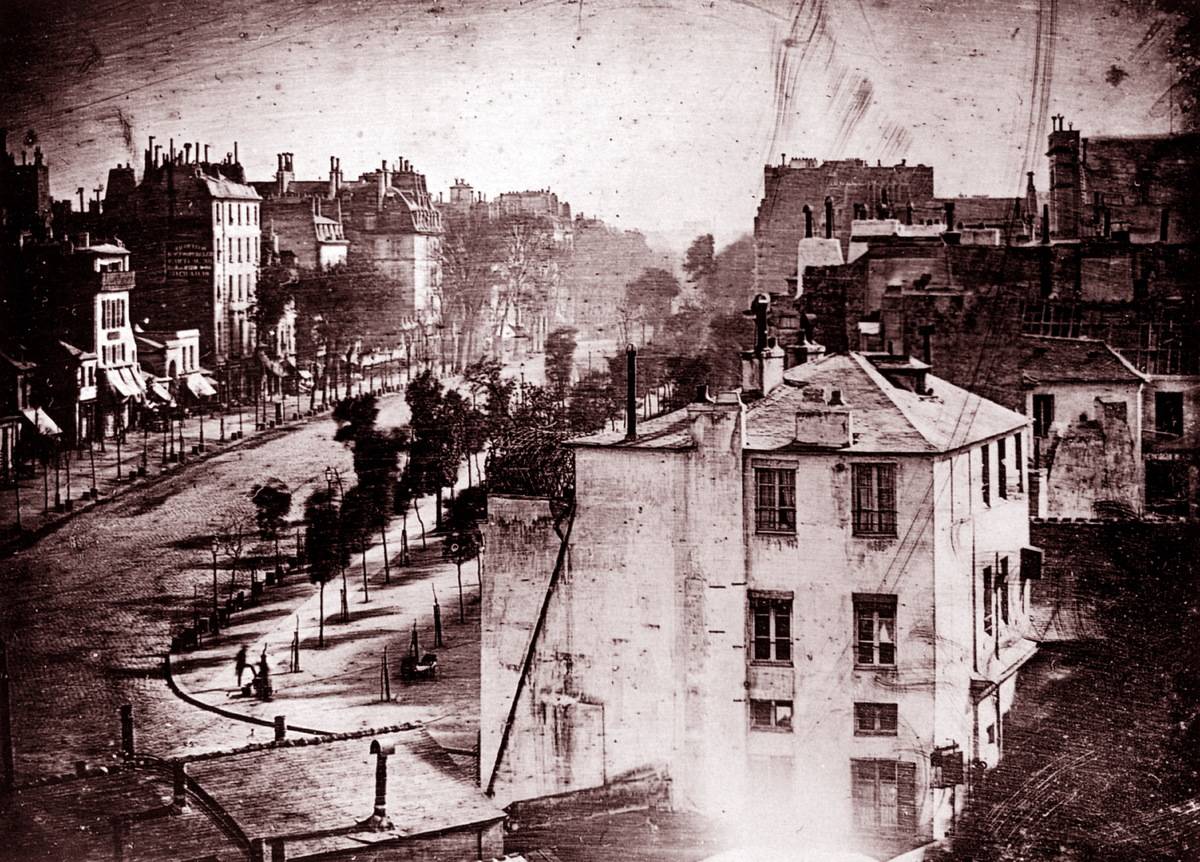
The first known photograph of a human was taken in 1838. The photographer, Louis Daguerre, snapped a picture of the Boulevard du Temple in Paris. If you do not see the person, look closely at the bottom left.
On the side, a man is getting his shoes shined. He remained still long enough for the long exposure to capture him. Daguerre did not know that a person was there; it was entirely an accident. In the early days of photography, capturing a visible person on camera was rare.
The First Self-Portrait
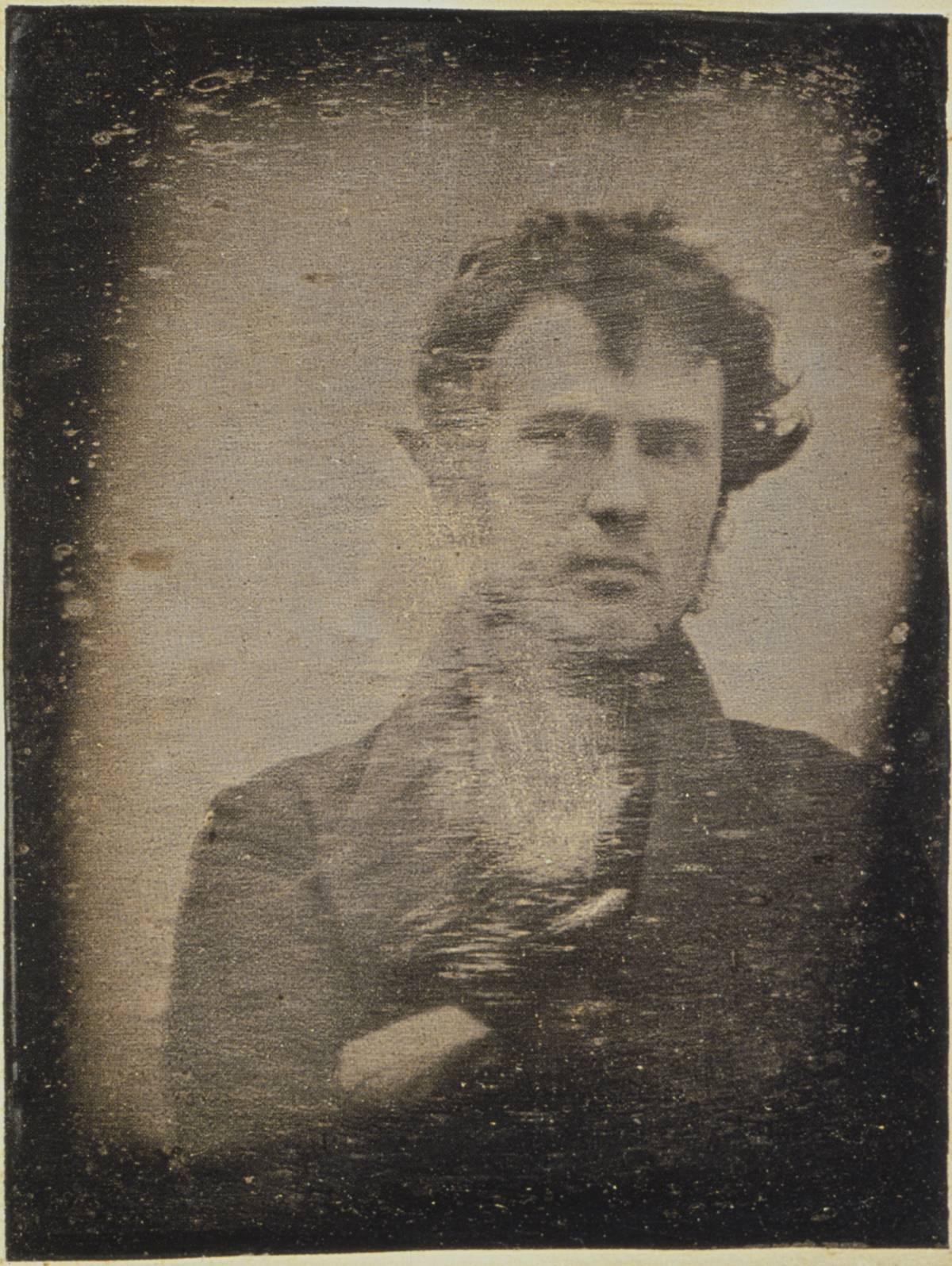
Although selfies are a modern phenomenon, self-portraits date back to 1839. This was taken by (and features) Robert Cornelius, an American photographer who pioneered the field. Between 1841 and 1843, he operated one of the earliest photography studios ever and aimed to decrease the camera’s exposure time.
Cornelius invented the “solar lamp,” a camera light that uses lard. It burned brighter and cost less than traditional whale oil lights. During this self-portrait, he was testing the light source. On the back of the photograph, Cornelius wrote, “The first light picture ever taken.”
The First Plane And A Man’s First Photo
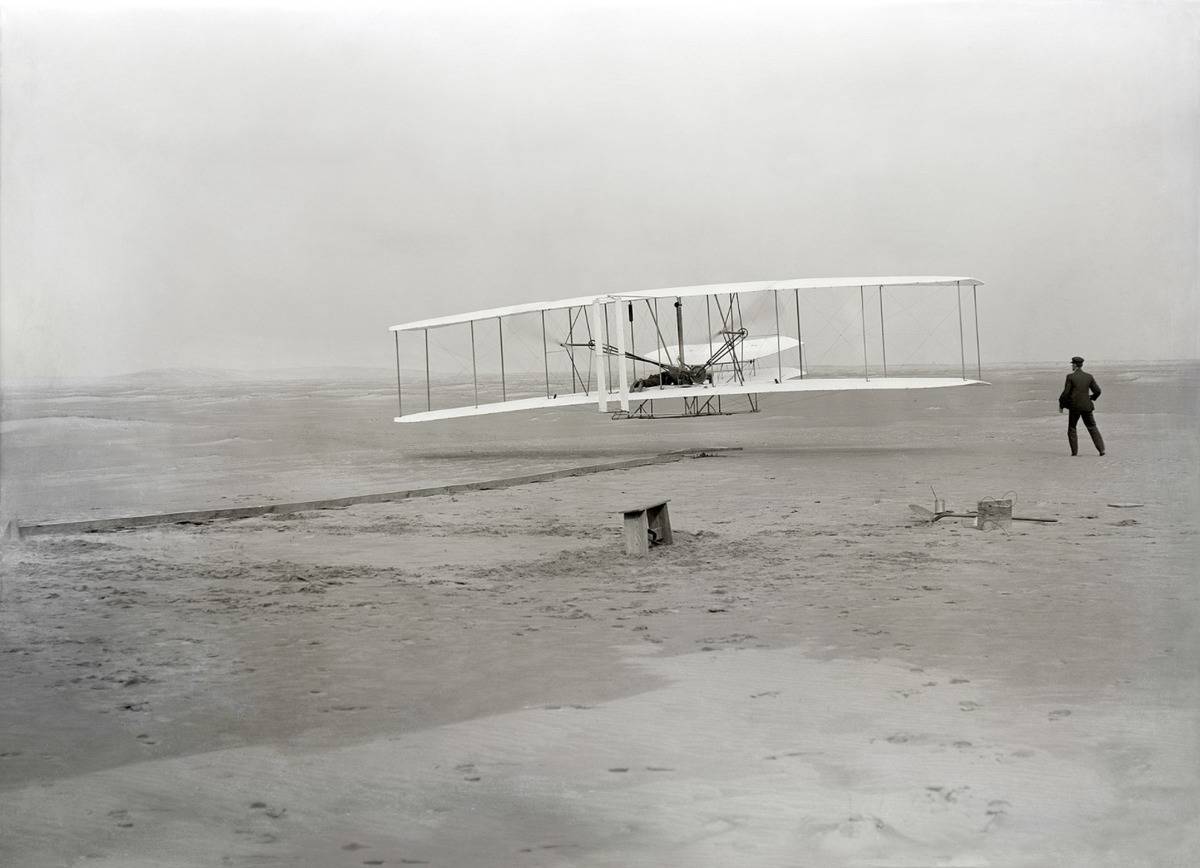
On December 17, 1903, aerialists Orville and Wilbur Wright traveled to the Kill Devil Hills in North Carolina. They were testing their new glider in a private spot away from reporters. However, they also brought along John Thomas Daniels Jr. from the Life-Saving Station (similar to a coast guard). Daniels was an amateur photographer–in fact, this was his first photo!
The Wright brothers brought their Gundlach Korona 5×7-inch glass plate view camera and a tripod. They then handed it to Daniels, who had never even seen a camera before. Fortunately, he managed to capture Orville flying the first plane.
The First Photo Of The Sun
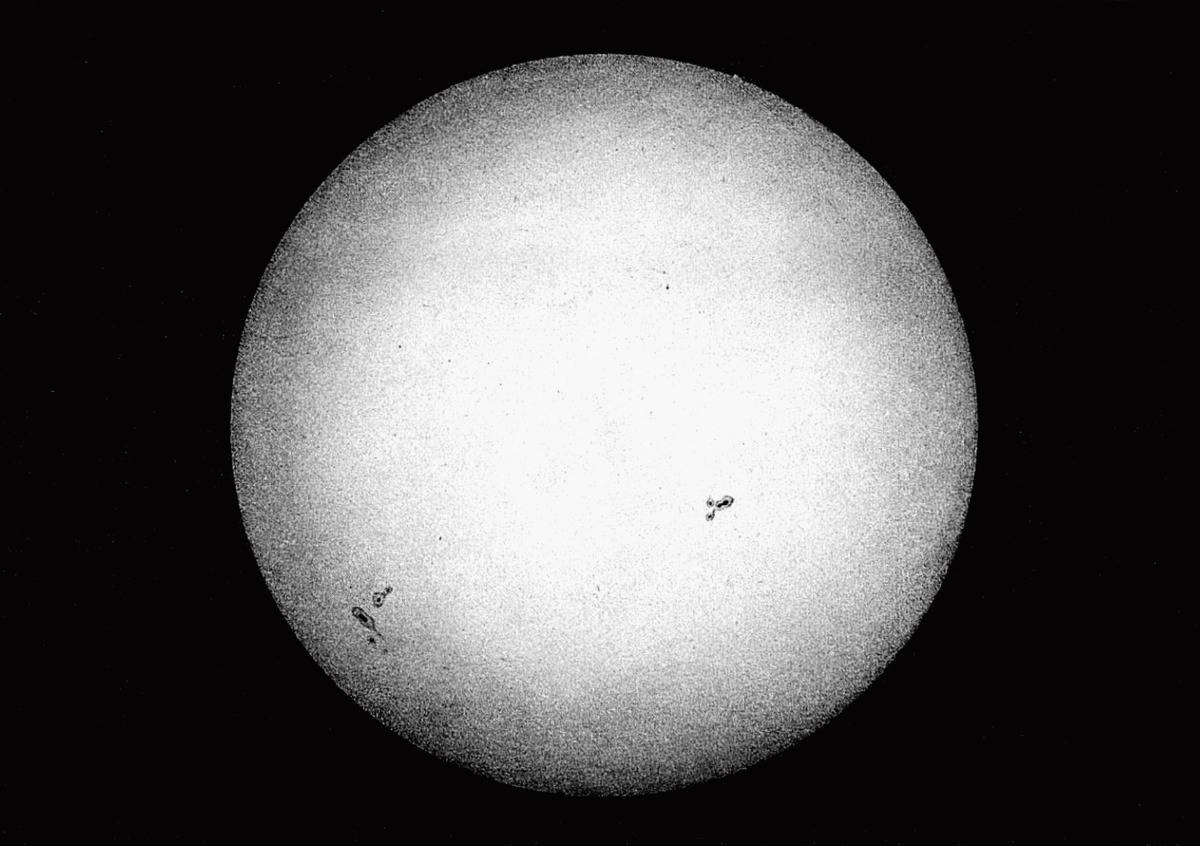
The oldest surviving photograph of the sun dates back to 1845. Two French physicists, Louis Fizeau and Leon Foucault, took the picture during sunrise on April 2. The vintage photo is only five inches long and wide, with several sunspots throughout.
Fizeau and Foucault used a daguerreotype, but they altered the chemical treatment to make it more light-sensitive. They only exposed the camera for 1/60th of a second, and then they treated the picture on a metal disc with chemical fumes. Once they achieved the clarity they wanted, they “froze” the image with another chemical solution.
The Oldest Picture Featured In The News
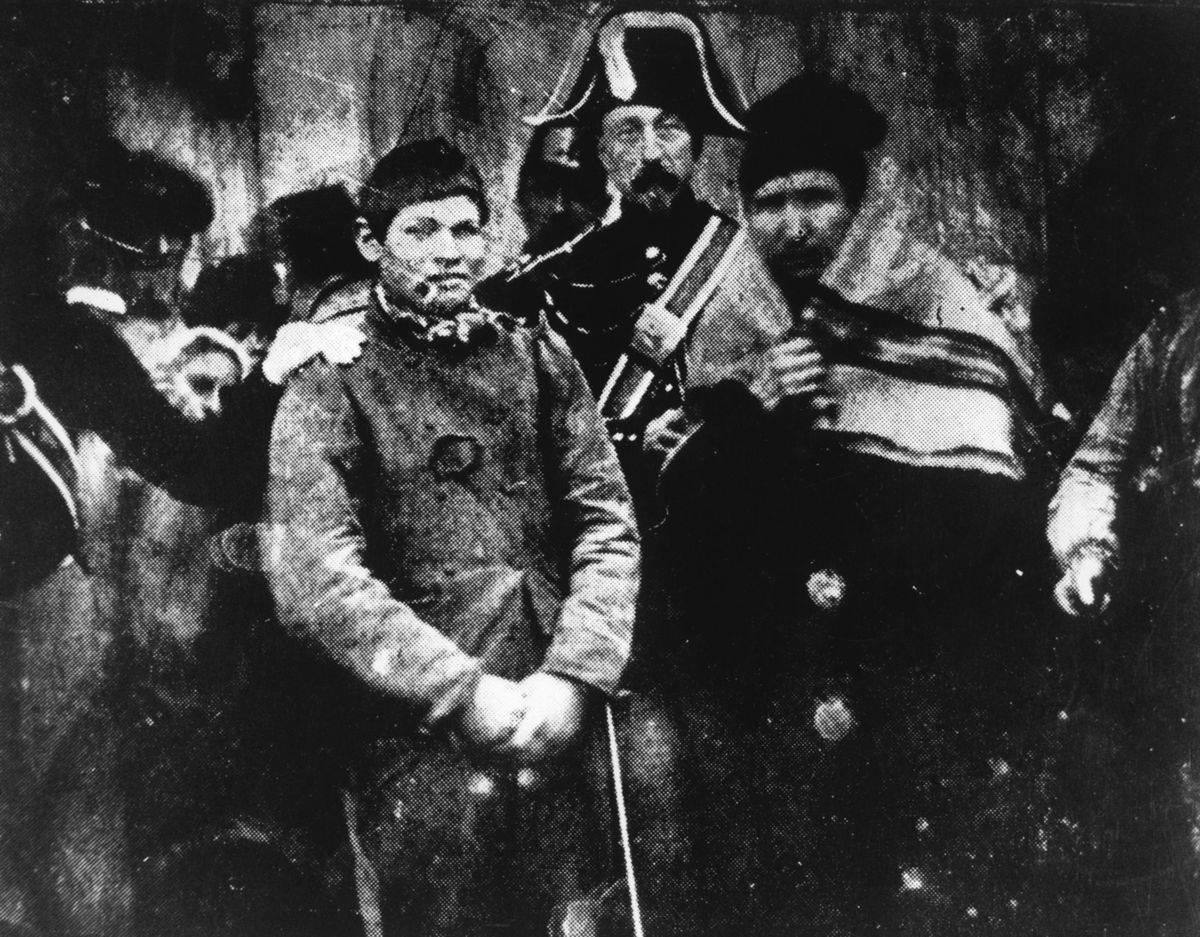
Photojournalism is explaining or emphasizing news reports through pictures. The oldest photo taken for the news has little information. Historians still do not know who took the photo or who is depicted in it.
Here is what we know: the picture was taken in 1847 and shows a man being arrested in France. It is also the first photograph of an arrest. This illustration was not printed onto paper; it was engraved on the end grain of wood. In magazines and newspapers, that method became commonplace through the 1870s.
The First Color Photograph
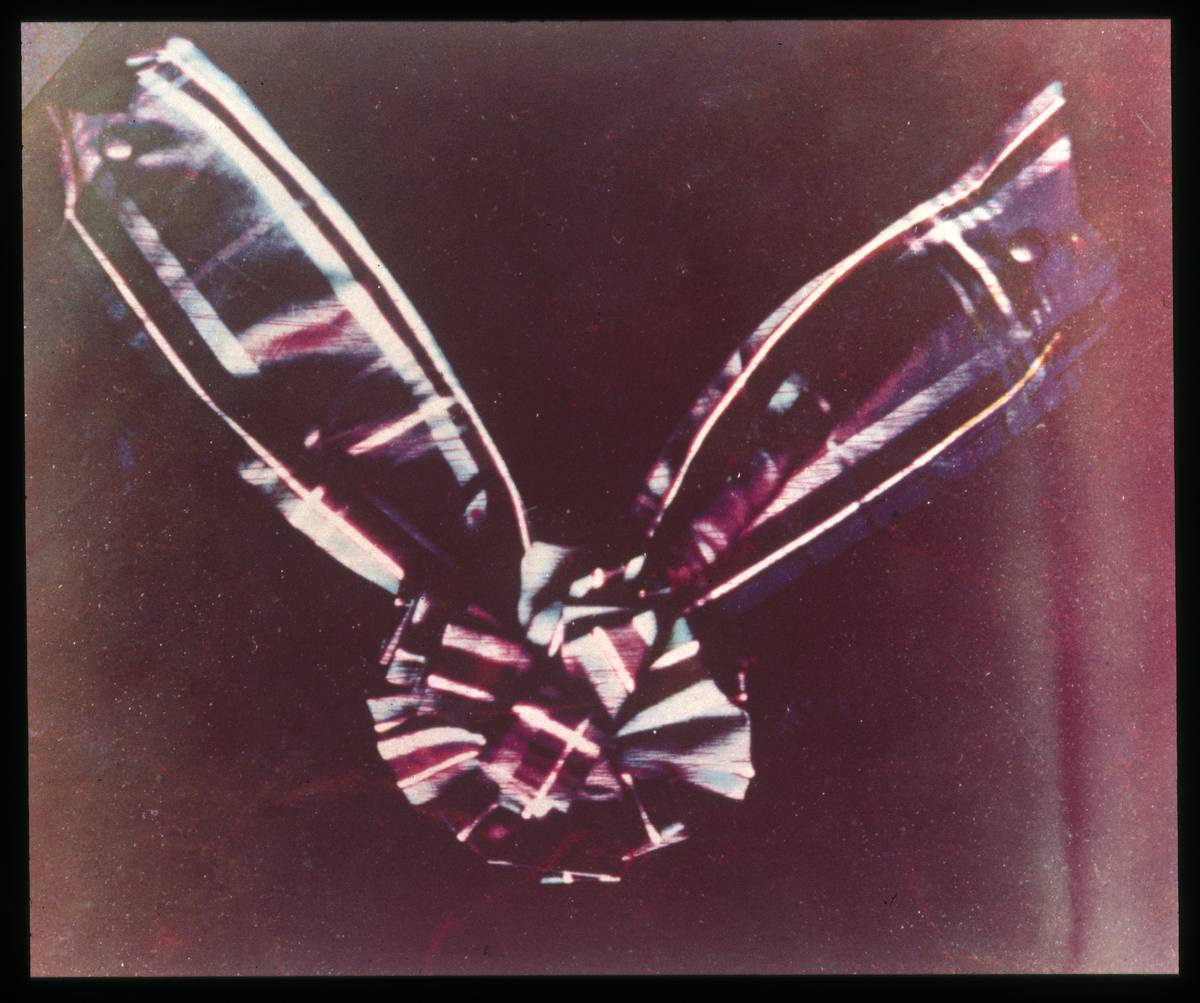
Once photographers got the hang of cameras, they immediately started working on color pictures. In 1855, James Clerk Maxwell invented the three-color method. This technique can create any color through three primary colors, similar to how printers work today.
In 1861, photographer Thomas Sutton joined Maxwell to test the three-color method. They snapped a picture of a colorful ribbon that is tied in a knot. Although it was successful, photography’s full-color spectrum would not be invented until 1906. The original colored picture hands in Maxwell’s former home, which is now a museum in Edinburgh, Scotland.
The Oldest Aerial Photograph
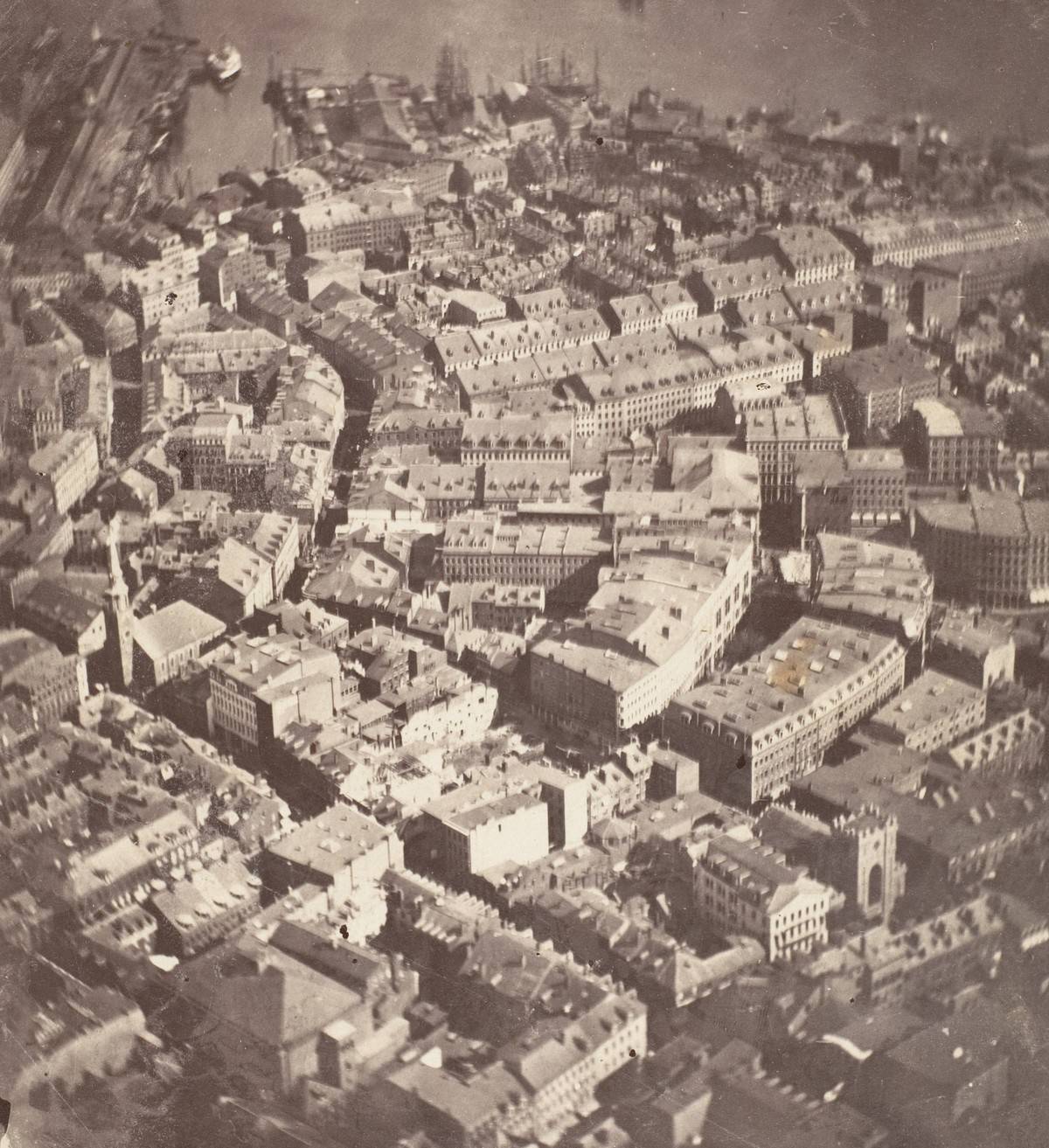
Although some people view aerial photographs as modern technology, they actually date back to 1860. Throughout the 1850s, French photographer Gaspar Felix Tournachon, known as “Nadar,” combined his two passions of ballooning and photography. He spent several years trying to take an aerial photograph of the French village of Petit-Becetre.
Sadly, Nadar was beaten by Boston photographer James Wallace Black. On October 13, 1860, Black flew 2,000 feet high on his hot air balloon. He snapped a picture of Boston, the earliest known aerial picture (seen here). Nadar’s oldest photo did not arise until 1866.
An Early Picture Of Josef Stalin
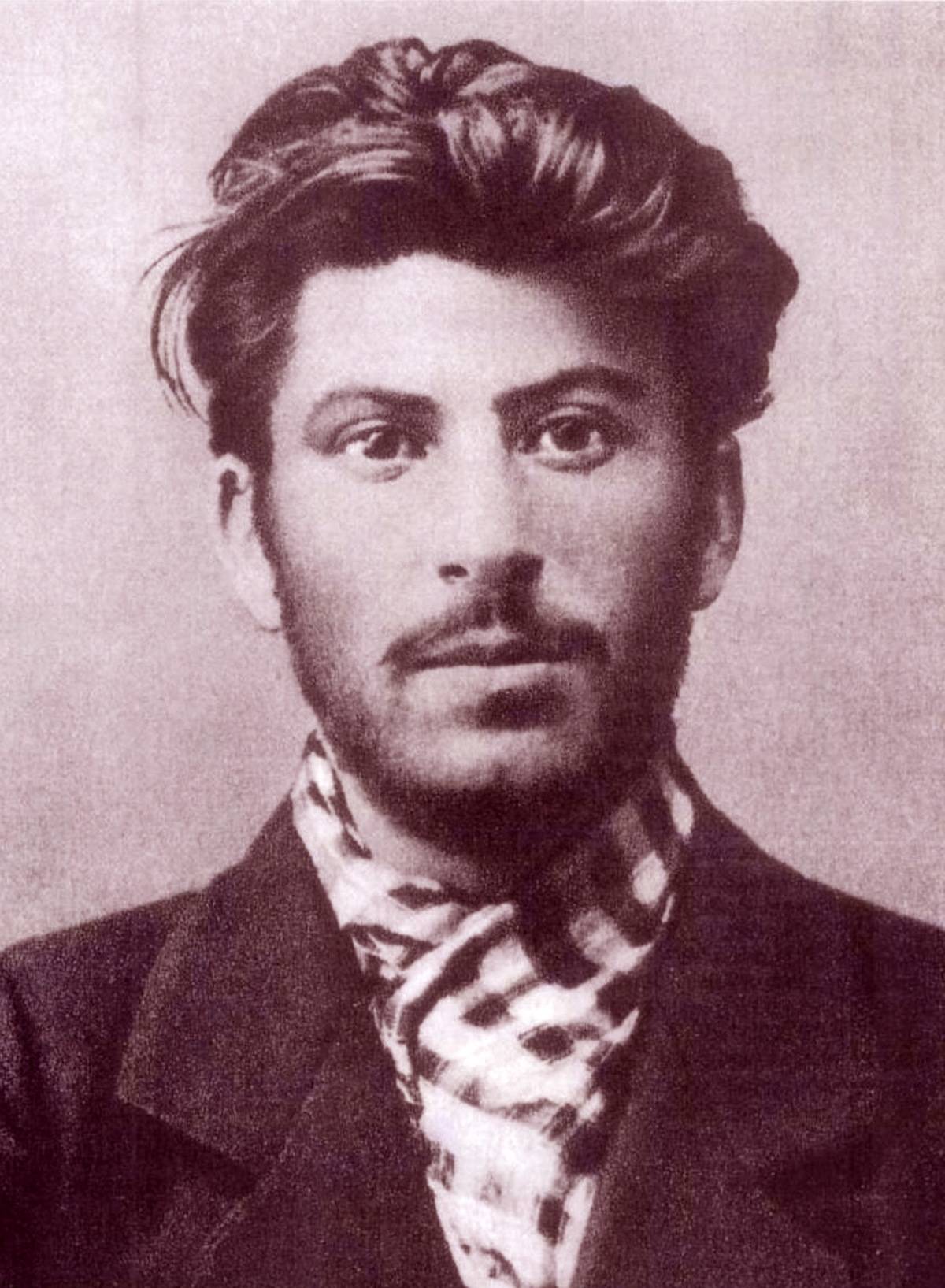
This is one of the oldest known pictures of Josef Stalin. In this 1901 portrait, he was 23 years old. But he was also at a crucial turning point in his life. In November of that year, he joined the Tiflis Committee of the Russian Social Democratic Labour Party.
This would eventually become known as the Russian Social Democratic Workers’ Party during the 1912 revolution. This committee formed strategies for the future communist Russia.
The First Photograph Of A U.S. President
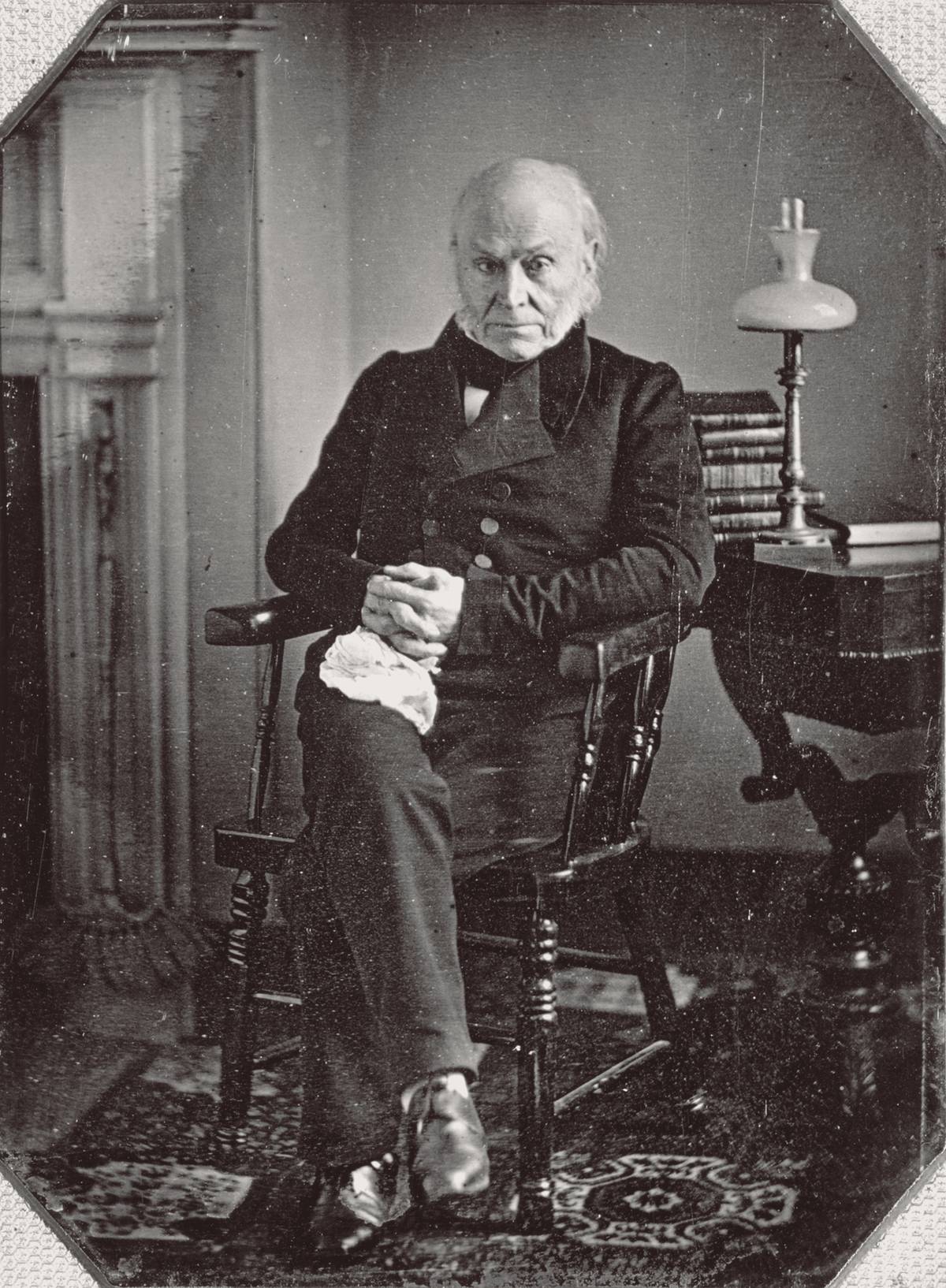
In 1839, Louis Daguerre released the first commercially available camera, called the daguerreotype. The United States’ sixth president, John Quincy Adams, took advantage of this. His photographer was Philip Haas, a German-born, American citizen who traveled to Paris to learn about photography.
Daguerreotypes had to be colorized on silver-plated copper sheets, which required a long post-photo process. Adams also had to sit completely still for 60 to 90 seconds. But he did it, and his photo was taken in 1843, 14 years after he left office. The first president to be photographed while in office was William Henry Harrison in 1841.
The Oldest Colored Landscape In Existence
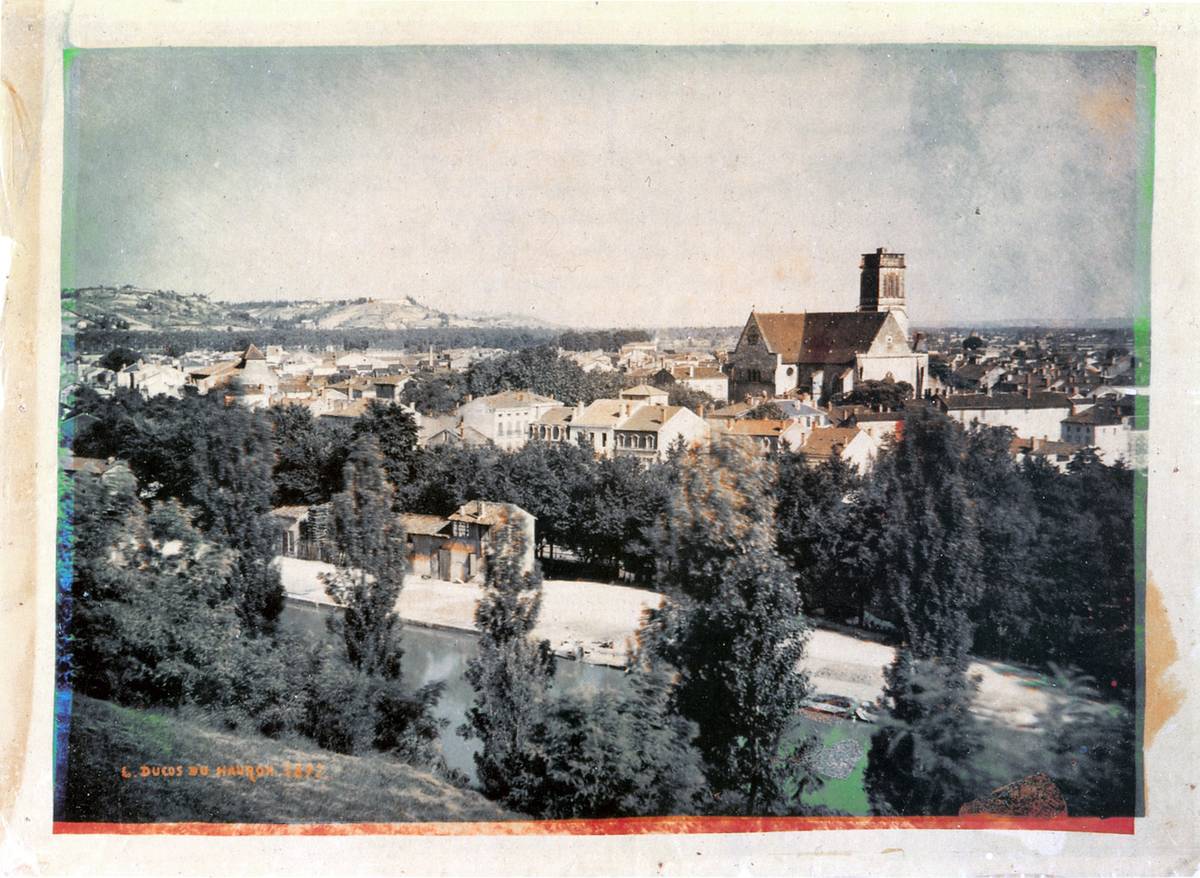
In the late 19th century, photographers used the three-color theory to create colored images. Many had to take a photo three times and layer them on top of each other. But in 1877, photographer Louis Ducos du Hauron had a better idea.
He stacked three color recording emulsions on top of each other so that they could all be exposed at once. To test it, he took the first colored landscape photo. The image, called “Landscape of Southern France,” depicts a small French village. Hauron’s “tripacks” revolutionized the history of photography.
Photographing The Eiffel Tower Throughout Its Construction

The oldest photos of the Eiffel Tower were taken during its construction. Construction began in 1887, as the tower was designed to be the entrance for the 1889 World’s Fair. From the beginning, photographer Hippolyte Blancard documented the building’s construction.
From July 1887 to April 1889, Blancard captured several pictures of the Eiffel Tower. The elevator was built first, and engineers formed the base around it. Blancard’s most famous photo from this era was printed in August 1888. The tower’s architect, Gustave Eiffel, stands beneath it.
The Earliest-Known Picture Of Abraham Lincoln
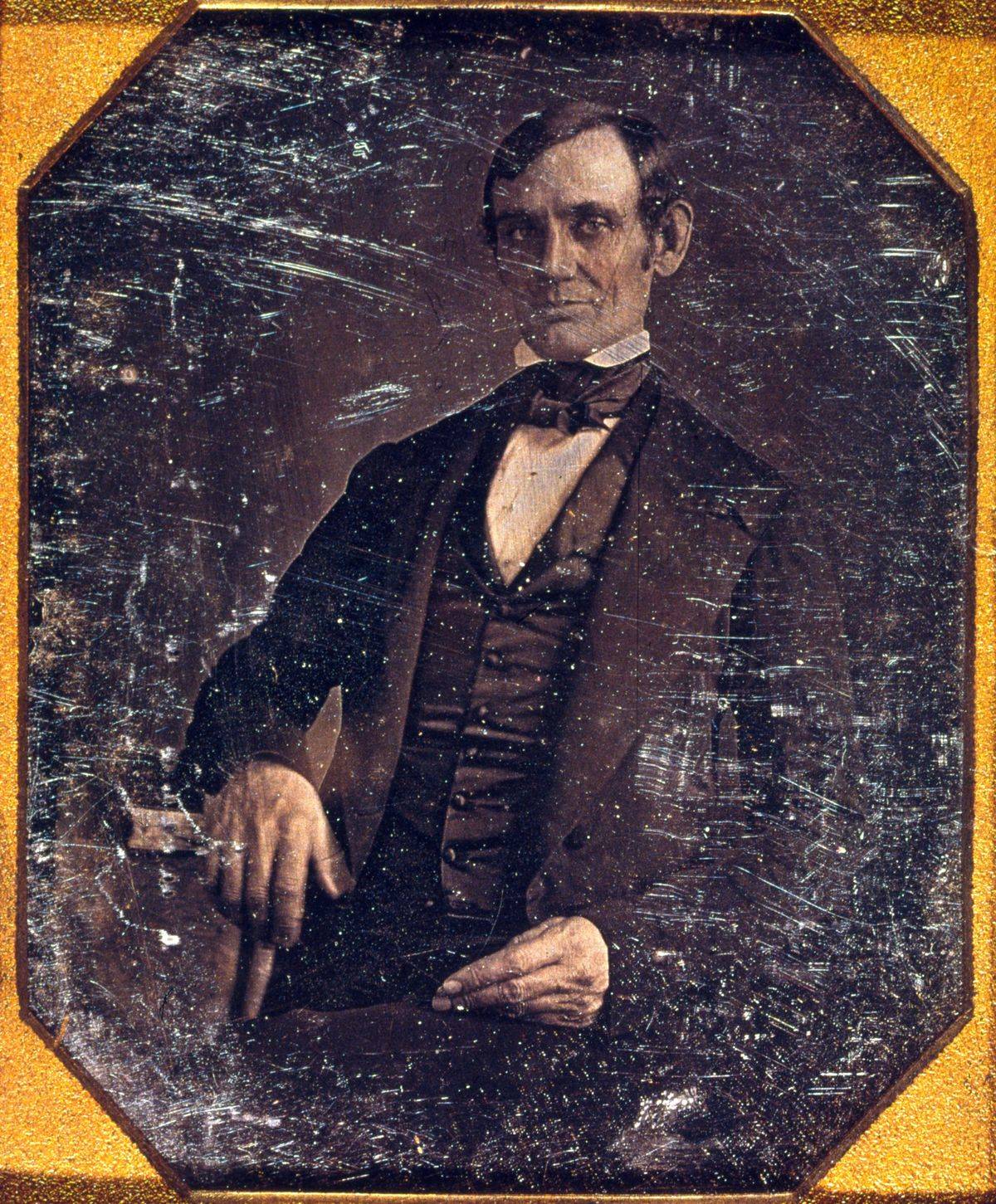
The earliest photo of Abraham Lincoln was taken in 1846 or 1847, decades before he became president. At the time, Lincoln was a frontier lawyer in Springfield, Illinois, and he had recently been elected to the House of Representatives. He was 37 or 38 years old, and daguerreotypes were still in their infancy.
The photographer, Nicholas H. Shepherd, took several photographs of American government officials. According to Lincoln’s son, Robert, this picture was taken in either St. Louis or Washington, although historians cannot confirm which.
The Oldest Digital Photograph
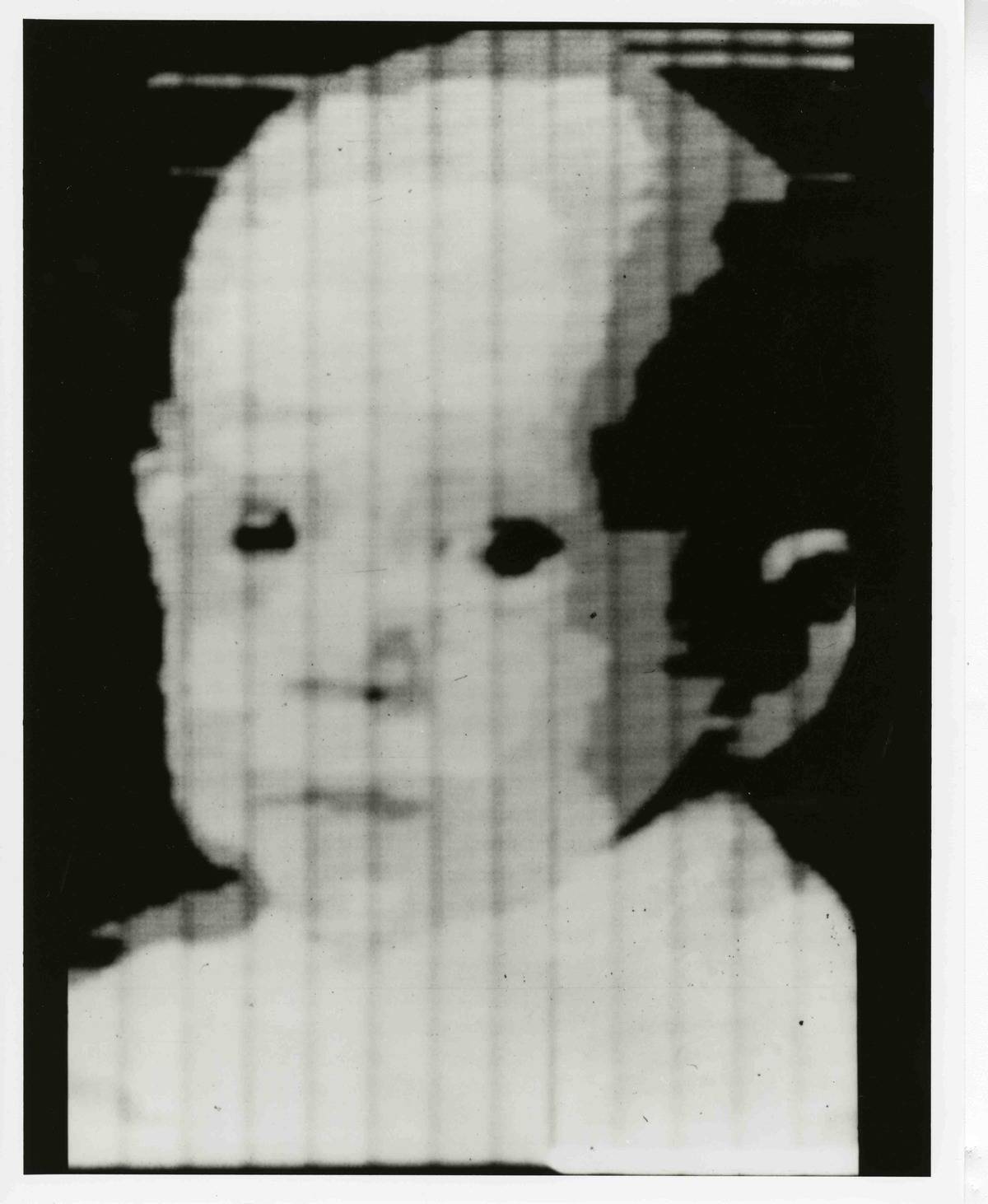
Digital photography began developing in the 1950s. In 1951, American engineers led by Russell Kirsch found a way to send digital signals to a magnetic tape, resulting in the first tape recorder. But they could not translate images until 1957.
That year, Kirsch took a picture of his three-month-old son, Walden. He scanned an analog photograph onto a tiny file using a primitive computer. But digital photography still had a long way to go. It wasn’t until 1975 that Steven Sasson, an engineer at Eastman Kodak, constructed the first digital camera.
The Oldest Picture Of The United States, Ever
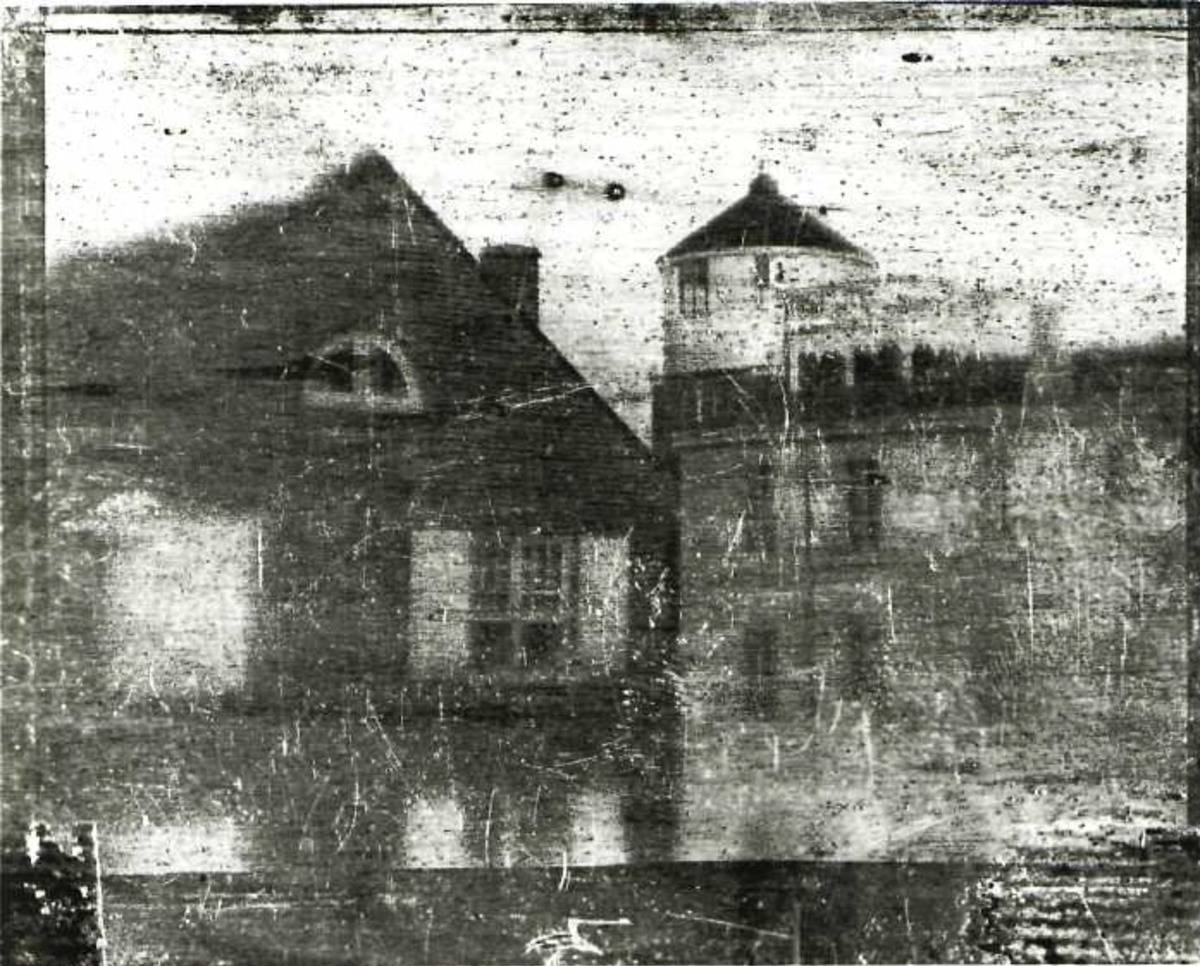
Although the first cameras were developed in France, the technology quickly traveled to other countries, including the United States. America’s earliest known photo was taken by inventor Joseph Saxton. He snapped a picture of Central High School in Philadelphia, his hometown.
Using a daguerreotype, Saxton sat on the corner of Juniper and Walnut streets for a full ten minutes to capture this building. He worked at U.S. Mint, and this high school was across the street. Saxton fiddled with the new technology for years after he photographed this school
Panoramic Pictures Have Been Around For Over A Century
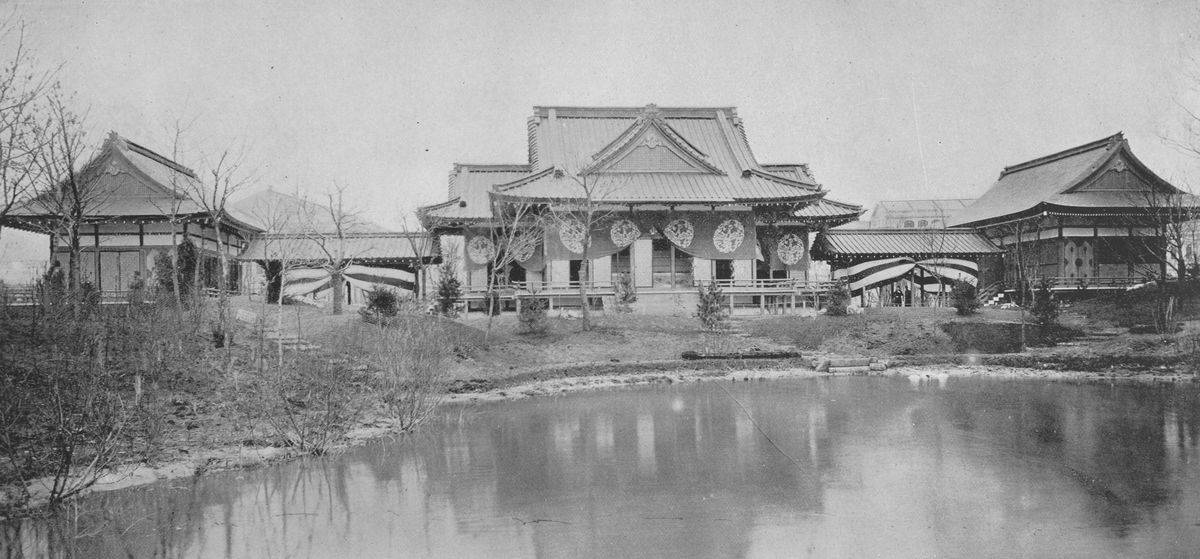
Shortly after the invention of the camera, photographers worked to make panoramic pictures. In the 1850s, they created photos of cityscapes by attaching multiple daguerreotype plates together. In the 1890s, inventors came up with the first panoramic camera.
These cameras–which were commercialized as the Al-Vista in 1898–could rotate both the camera and the film 360 degrees. They used “swing lenses” and “roll film,” which could rotate without a tripod. Oddly enough, the first panoramic camera was patented in Austria in the 1940s; but no pictures from this era survived.
The Only Known Photo Of Vincent Van Gogh
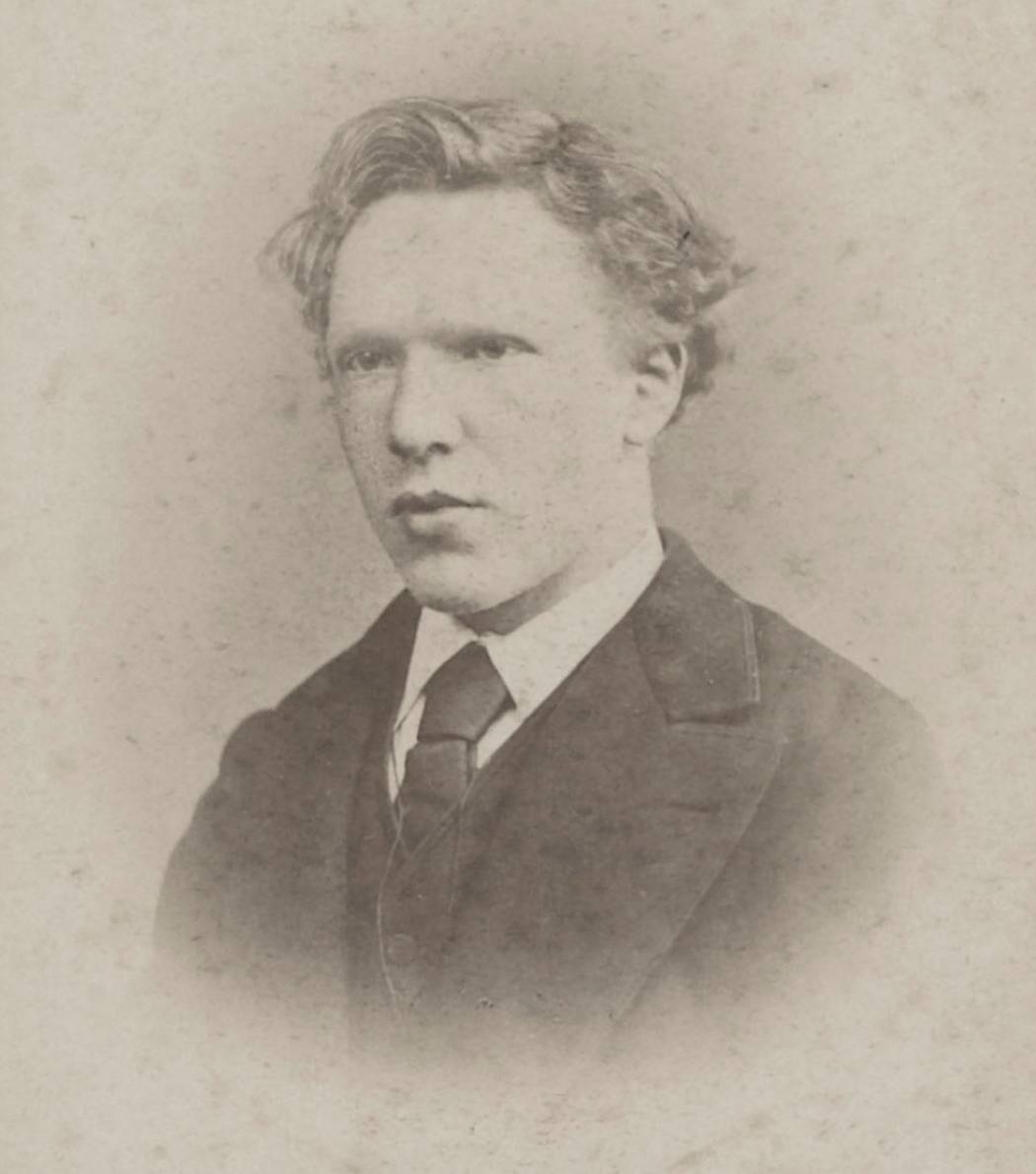
In 1873, artist Vincent Van Gogh was 19 years old. He lived during the infancy of photography, but not many images of him exist. This is the only surviving photo of the artist; historians often mistook images of him for his brother, Theo.
That January, Van Gogh prepared for his first job as an art dealer in London. Before he left, he and his brother took photos of themselves to give to their father. Historians do not know who took the photograph, but Van Gogh told his sister that the experience had not been pleasant.
Mecca, One Of The Earliest Religious Photos
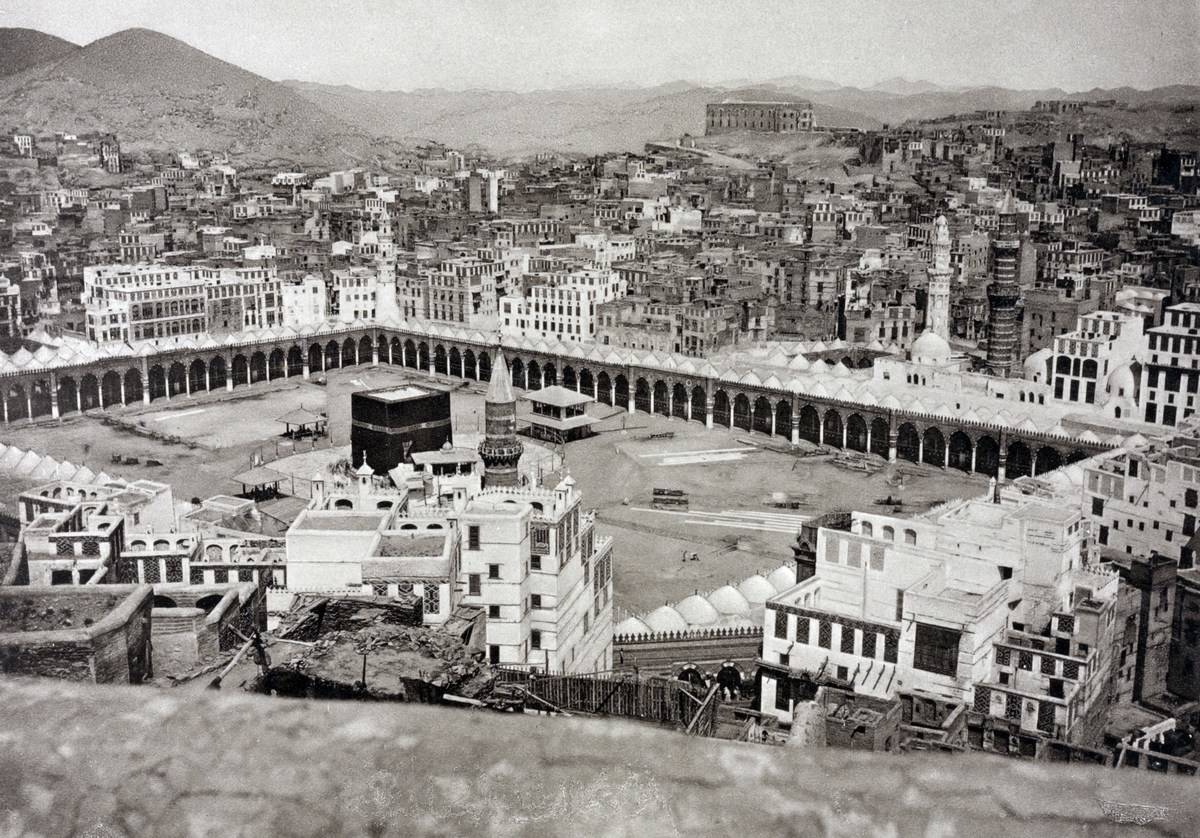
Today, photographs of churches and spiritual cites are common. But one of the first religious photographs in the world shows Mecca in present-day Saudi Arabia. Taken in 1881, this photo shows the Great Mosque and Kaaba, the shrine at its center.
The photographer, Muhammad Sadiq Bey, was a surveyor and engineer for the Egyptian Army. Because photographers outside of Europe and America were not well-studied, not much is known about Bey. But he captured some important photographs throughout history, including the oldest known picture of Islam’s holiest city.
Mark Twain Was Photographed When He Was 15
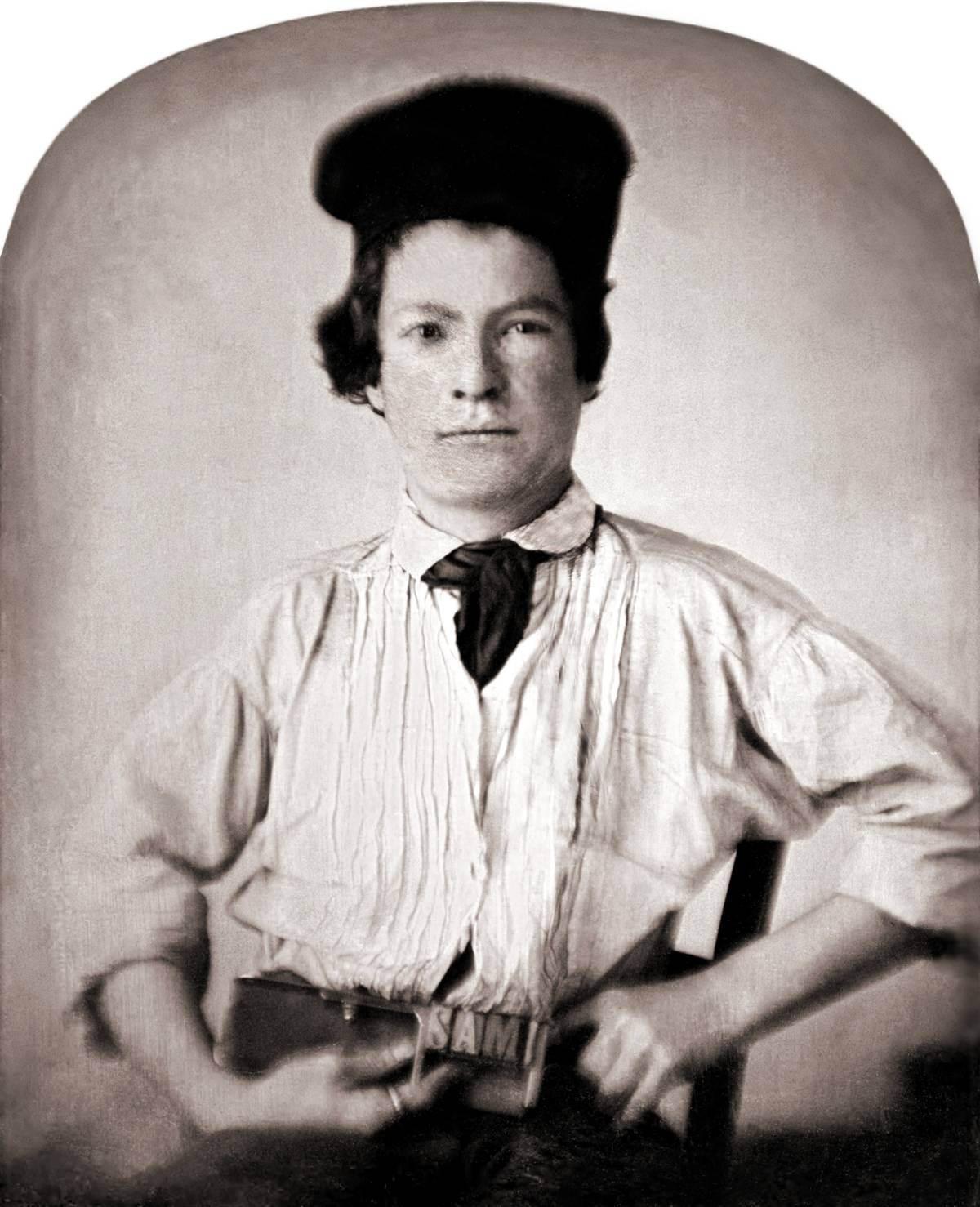
Mark Twain was photographed thousands of times before his death. But when he was young, photographs were rare. The earliest known picture of Twain shows him as a 15-year-old boy.
In 1850, photographer G.H. Jones took a daguerreotype of Twain. He is wearing a printer’s cap and carries a composing stick with his birth name on it (Samuel Clemens), which he had to spell backward for it to appear on the camera. This is one of the oldest surviving photos of a celebrity taken well before he became famous.
One Of The Most Famous Early War Images
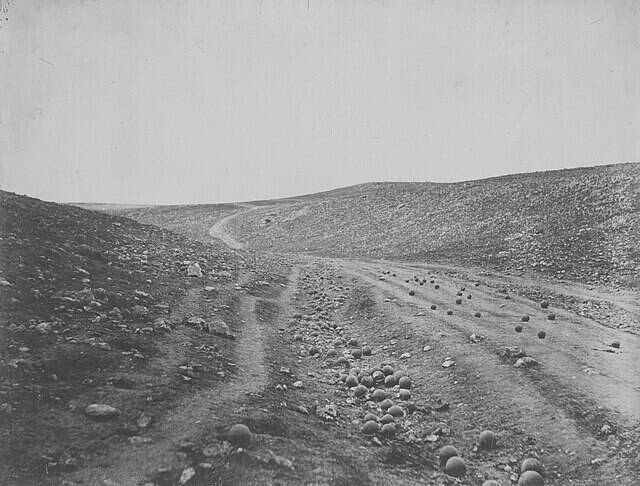
The Crimean War, fought between Russia and an alliance of England, France, and the Ottoman Empire, was the first widely-photographed war. Although the most well-known photographer was the Romanian Carol Popp de Szathmari, he did not snap the most famous picture. That was the result of British photographer Roger Fenton.
Fenton was sent to document the Crimean War by Thomas Agnew of Agnew & Sons. In 1855, he snapped a photo of a battlefield that British soldiers nicknamed “The Valley of the Shadow of Death” for its constant shelling. The Valley of the Shadow of Death photo became one of the most recognizable images of war.





